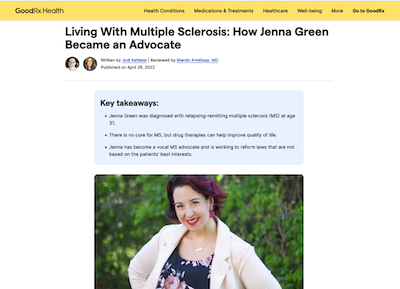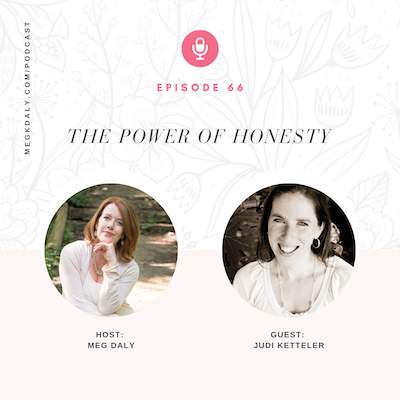
I recently wrote a series of articles about newborn parenting for a large children’s hospital system. My kids are 11 and 13, so talking to pediatricians about midnight feedings and the seedy texture of baby poop brought me back!
I realized that aside from some new gadgets, not that much has changed regarding newborn care.
But some important things have changed in how we write about parenting and healthcare.
For example, ten years ago, I would have used the term “breastfeeding mothers.” Now I know it’s better to say “breastfeeding parents” because transgender people have children. Instead of “moms and dads,” it’s better to simply say “parents,” because same-sex couples have children.
It’s only in the past few years that I’ve truly understood how many places bias can lurk in health content. These biases can be related to race, gender and gender expression, sexual orientation, ability, education, language—or intersections of all of these.
The words on healthcare websites can invite consumers in and make the experience more attuned to them. Or this content can turn users away and make the experience more difficult. Ultimately, content riddled with biases and/or poor accessibility makes it harder for people to access healthcare.
If you are in the digital healthcare content space, writing content that is accessible and inclusive should be front of mind.
It’s not about so-called “cancel culture” or the idea that “We’re not allowed to say anything anymore.” Those are childish ideas. And they’re inaccurate.
Here’s what IS accurate: When you solve for the people who have traditionally been least included, you solve for everyone.
If you’re already on this journey as a writer or healthcare digital content manager, I’m glad to be on it with you! If this is new to you, I have a few thoughts about immediate changes you can make in your digital healthcare content.
What Do I Mean By Accessible Healthcare Content?
The content on a hospital’s site — the words, sentences, and how the page looks — can invite people in. It can offer clarity and help promote health literacy and health equity.
Or, the content can exclude groups of people, deny access, and confuse consumers who already feel overwhelmed.
Let’s look at what we know.
First, we know people researching health conditions and/or trying to find care are often under stress. Their brain is already taxed. In general, people read as little as 20% of web content.
Second, these consumers are more likely to be viewing the content on their phone. At least 50% of all web traffic comes from mobile devices, but it’s higher for healthcare. In fact, using a smart phone to manage healthcare has grown by 50% during the pandemic. And 70% of users expect to use keep using their phone to manage their healthcare.
Let’s think about what this means.
A person with a phone is likely multi-tasking and distracted. Plus, the screen is smaller, so they can read less at a time. Pages may load more slowly, especially if they are on a cellular network.
Hence, health content should be scannable, with short sentences and short paragraphs.
It should also be no higher than an 8th grader reading level, because about 80 million Americans have limited health literacy. Plus, for many healthcare website users, English isn’t their first language. Research is clear that poor health literacy is linked to poor health outcomes.
Users may also have visual or hearing disabilities that affect how they engage with content like graphics and videos. Other disabilities may affect how they can access healthcare.
And finally, users may not trust the healthcare system because of past experience with racism and other discrimination.
5 ways to make your healthcare content more accessible
I work with clients to create comprehensive content strategies that increase accessibility, but here are 5 basic things you can do today:
- Write short sentences. Long sentences require holding an idea in short-term memory, which is hard to do when you’re stressed. Keep sentences to 22 words or less (Usability.gov actually recommends 20 words or less). Break complex ideas into two or more sentences
- Keep paragraphs short. Aim for paragraphs of 1 to 3 sentences (5 max). Eye tracking research reveals that users scan the first few words of paragraphs for relevant information. Use H2s to break up sections (this is good for SEO as well).
- Use plain language. Write at an 8th grade (or lower) reading level. The simplest way to explain a condition or treatment is the best. Avoid colloquial language; these expressions are challenging for non-native English speakers.
- Write in active voice. “We offer care” instead of “Care is offered.” Active voice is more conversational and helps you speak directly to the consumer.
- Make images and videos accessible. Write alt text for images (screen readers will read these). Likewise, always provide language captioning for videos. Add audio descriptions as well (I like this tutorial).
What Do I Mean By Inclusive, Equitable Language for Healthcare?
The basic idea is this: Let’s communicate with words that don’t harm people.
I know that it may feel difficult to get a 360-degree view of how one phrase or sentence can impact groups of people with varied experiences, histories, and health conditions. But that’s exactly what our job is.
We can start by using people-centered language. This means emphasizing the person over the condition and avoiding language that dehumanizes people.
For example:
- Instead of “diabetic people” or “diabetics,” use “people with diabetes.” Instead of “cancer patients” or “the obese,” use “people living with cancer” or “people living with obesity.”
- Avoid words like deformity; use neutral terms like condition or problem.
- Avoid words like suffer or afflicted.
- Avoid cliches that are insensitive to people with disabilities, such as “turn a blind eye.”
- Instead of talking about special needs, talk about accommodations.
Writing about groups
Medical narratives can quickly fall into blaming and stigmatizing. This is why we need to be mindful when writing about groups.
Instead of referring to marginalized, vulnerable, disadvantaged, high risk, hard-to-reach, underserved, and underprivileged groups, it’s more accurate and less stigmatizing to say things like:
- Groups that have been historically marginalized or made vulnerable.
- Groups that are struggling against economic marginalization.
- Groups experiencing disadvantage because of (state the reason).
- Groups placed at increased risk/put at increased risk of (outcome)
- Groups with higher risk of (outcome)
(Note, these examples are from a guide I often turn to: Advancing Health Equity: A Guide to Language and Concepts. The whole thing is worth reading, but the lists starting on page 7 are particularly actionable.)
The metaphors we use matter, too. No more battle and war metaphors, please! (“War against drugs” make us all cringe now.)
And we always need to be scanning for bias. I recently worked with a hospital client to advise on new language for their hospital registration for delivering parents. The changes were simple — “pregnant people” instead of “moms” — but could potentially have a large impact for a family.
There are many guides out there that go into details on specific issues. I sometimes use The Diversity Style Guide (which links to original resource) or The Conscious Style Guide.
Rooting out bias and problematic language is a practice, and I learn more with each project. Writing alone can’t bring about a more just, equitable world. But if you’re in charge of content, it’s the thing you have. So use it.
Because this is a major area of my content practice, I plan to write a series of blog posts. I’ll be talking next week about what it’s like, as a journalist, to use a sensitivity reader.
[Photo by National Cancer Institute on Unsplash ]
***
Where My Bylines Have Appeared Recently
 When I’m not writing healthcare content and creating content strategies for hospitals and agencies that work with hospitals, I’m writing essays and reporting stories.
When I’m not writing healthcare content and creating content strategies for hospitals and agencies that work with hospitals, I’m writing essays and reporting stories.
Here are a few of my recent favorites:
- One Man is Sounding the Alarm After Yardwork Almost Killed Him, for Good Housekeeping
- Random Acts of Life, for Cincinnati magazine
- Living With Multiple Sclerosis: How Jenna Green Became an Advocate, for GoodRx Health
- My Journey: Having a Son With a Food Allergy, for GoodRx Health
****
I Talked About My Honesty Book on a Podcast
A few weeks ago, I spoke with Meg Daly for her Tranquility Talk podcast. We talked about the power of honesty — a subject I’ve written widely about (including this book in 2020).
Meg found me through this New York Times piece I wrote about how drinking less solves problems, even if you don’t have “a problem.” We spoke about this and many other things!


